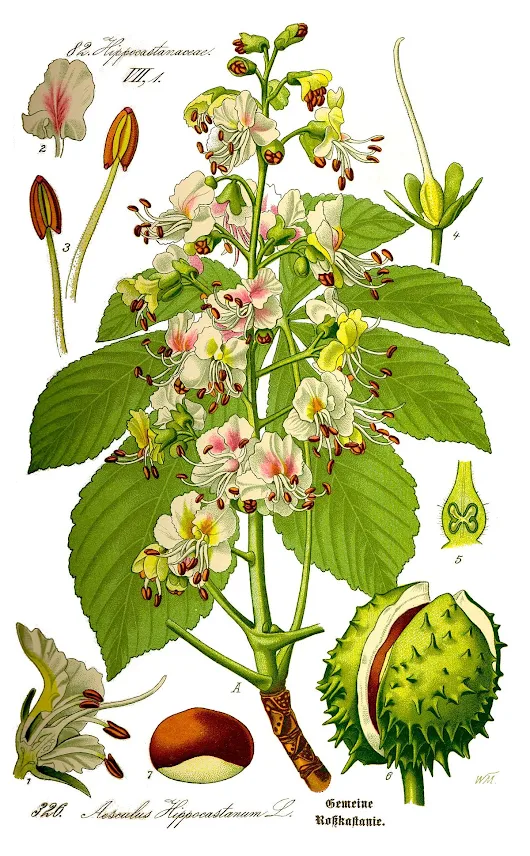40-8-17 Naval Blockade of British Isles ..
NFS - National Farm Survey ..
Thursday, April 11, 2019
Wednesday, April 10, 2019
Starch - fermentation of Aesculus hippocastanum conkers - WW1
During the First World War, there was a campaign to ask for everyone (including children) to collect horse-chestnuts and donate them to the government. The conkers were used as a source of starch for fermentation using the Clostridium acetobutylicum method devised by Chaim Weizmann to produce acetone for use as a solvent for the production of cordite, which was then used in military armaments. Weizmann's process could use any source of starch, but the government chose to ask for conkers to avoid causing starvation by depleting food sources. But conkers were found to be a poor source, and the factory only produced acetone for three months; however, they were collected again in World War II for the same reason.
Unlike yeast, which can digest sugar only into alcohol and carbon dioxide, Clostridium acetobutylicum and other Clostridia can digest whey, sugar, starch, cellulose and perhaps certain types of lignin, yielding butanol, propionic acid, ether, and glycerin.
https://en.wikipedia.org/wiki/Aesculus_hippocastanum#Uses
https://en.wikipedia.org/wiki/Clostridium_acetobutylicum
Unlike yeast, which can digest sugar only into alcohol and carbon dioxide, Clostridium acetobutylicum and other Clostridia can digest whey, sugar, starch, cellulose and perhaps certain types of lignin, yielding butanol, propionic acid, ether, and glycerin.
https://en.wikipedia.org/wiki/Aesculus_hippocastanum#Uses
https://en.wikipedia.org/wiki/Clostridium_acetobutylicum
Tuesday, April 9, 2019
Transport - Bus
1925 > .
https://www.youtube.com/playlist?list=PL3kG3TM8jFKjDaqAMdH1NSnPUbk1yyxXo
Bus Centenary
https://www.youtube.com/watch?v=QU9Bj_JM7Go
Transport - Railways
https://www.youtube.com/watch?v=M77BpAkgsJY
Railways
https://www.youtube.com/playlist?list=PLtakTnKQQMCwiEm0N0MnFvY7BrY_AJW57
The Things That Move Us: Famous Trains >> .
https://www.youtube.com/playlist?list=PL3kG3TM8jFKgHwhGY5KNve2ozE2qqa7LP
Subscribe to:
Comments (Atom)
sī vīs pācem, parā bellum
igitur quī dēsīderat pācem praeparet bellum therefore, he who desires peace, let him prepare for war sī vīs pācem, parā bellum if you wan...

-
>>> Economic > >>> Geopolitics > >>> Military > >>> Resources > > >> Sociopoli...
-
2025 Fiasco; Christo-Fascist Project 2025 2025 Blueprint for Theocracy - αλλο >> . 2025 Christo-Fascist Blueprint for Autocracy - Shr...
-
> > Alliances > > > > Authoritarianism > > > Axis of Envious Resentment 2025 > > > > Civil...

